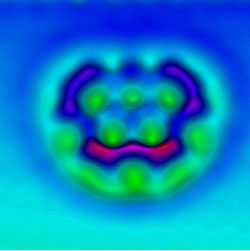The evidence that was presented at the 1954 inquest into Alan Turing’s death, which concluded a suicide verdict, would not stand up today according to Prof Jack Copeland. The story is tragic and romantic, but is it true?
The accepted version of events is that due to the persecution he was suffering as a result of his homosexuality, he took his own life by eating an apple laced with cyanide.
We have… been recreating the narrative of Turing’s life, and we have recreated him as an unhappy young man who committed suicide. But the evidence is not there
Prof Jack Copeland, University of Canterbury, Christchurch, New Zealand
By today’s standards the investigation was poor. For example, the apple was not tested for the presence of cyanide. Turing’s behaviour before his death appears not to be out of the ordinary. He was in the habit of taking an apple to bed and even left a note on his office desk, as was his practice on Fridays, to remind himself what needs to be done upon his return to work.
A motive for suicide is clear, but the pre-meditated intenion is missing.
Link



